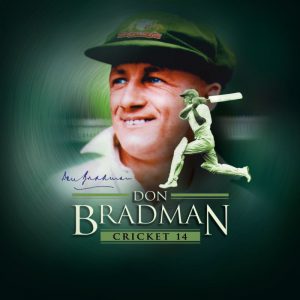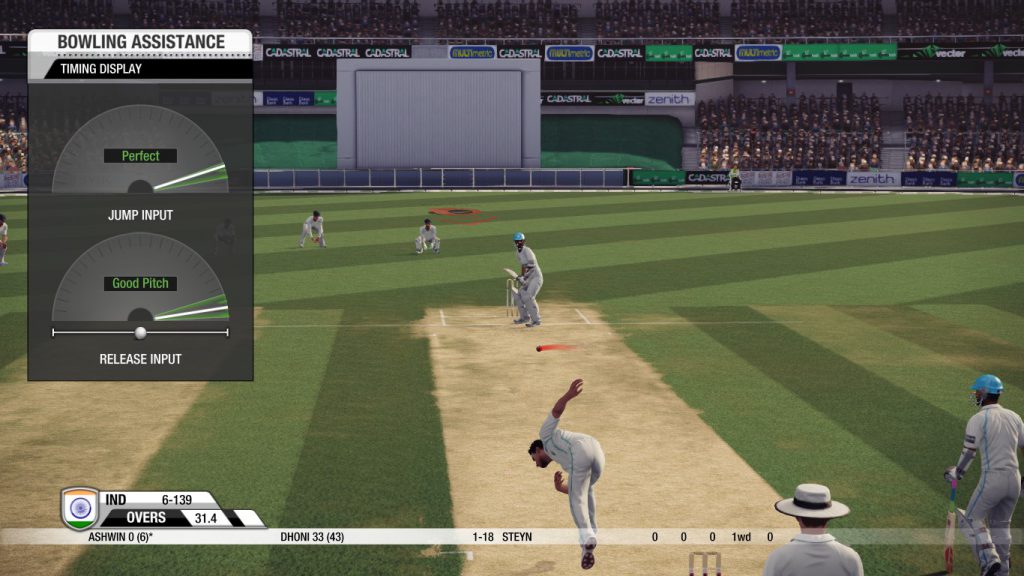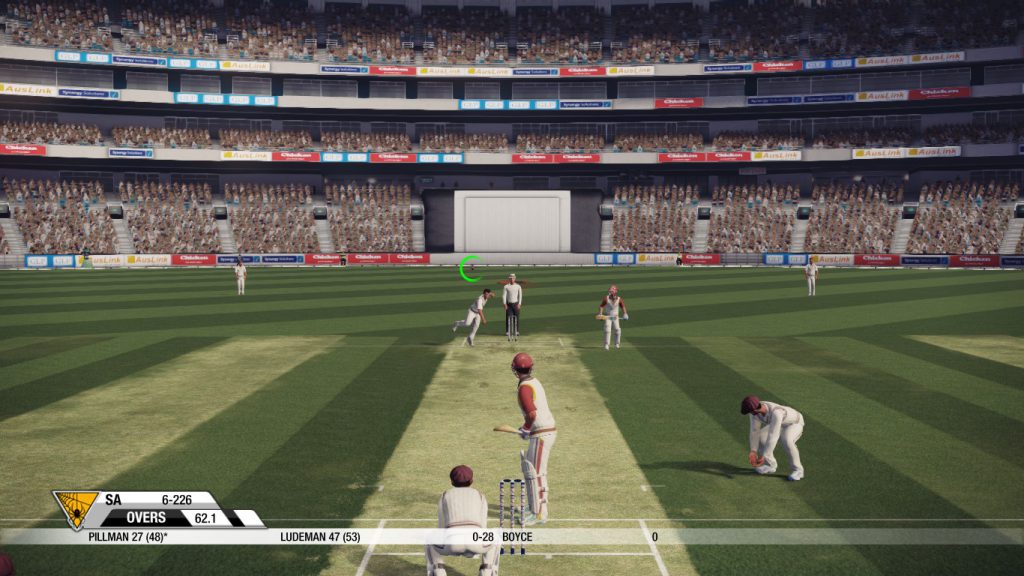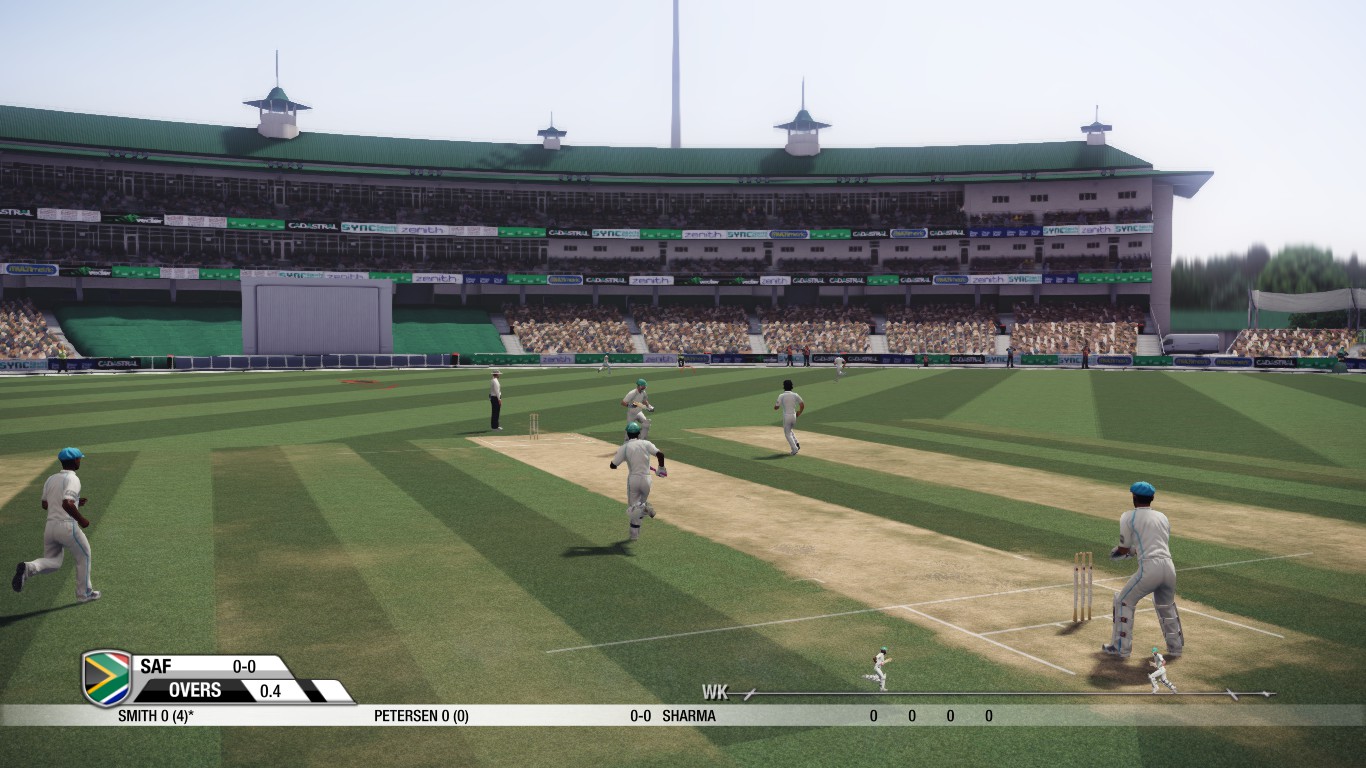Ah, yes, cricket. A game of strategy, skill, endurance, patience, and persistence. As I have said before, cricket might be the most quintessentially British sport imaginable, as the reach of the game extends almost literally only to countries that the British actively colonized, but even a sport with such a relatively limited appeal needs a video game adaptation, yes?
(Author’s Note: This article covers a game about a sport that is probably unfamiliar to most of our readers. Since this is a review about a game and not the sport itself, for the sake of brevity, this article uses cricket terms with the assumption that the reader is already familiar with the terminology. I mean, Wikipedia’s right there. Thanks in advance.)
 Well, yeah. In fact, there have been plenty of cricket games made, dating back to the 8-bit era of gaming. Unfortunately, though, the history of those games has been…rough, if I’m being charitable. Unlike pretty much every other sport, from soccer to golf to mixed martial arts, cricket has been cursed with a long, storied lineage of bad games. But, all streaks are meant to be broken eventually, right? In 2014, developers Big Ant Studios took up the mantle to make a game worthy of the subject matter, today’s piece of the Big Steaming Pile, Don Bradman Cricket 14.
Well, yeah. In fact, there have been plenty of cricket games made, dating back to the 8-bit era of gaming. Unfortunately, though, the history of those games has been…rough, if I’m being charitable. Unlike pretty much every other sport, from soccer to golf to mixed martial arts, cricket has been cursed with a long, storied lineage of bad games. But, all streaks are meant to be broken eventually, right? In 2014, developers Big Ant Studios took up the mantle to make a game worthy of the subject matter, today’s piece of the Big Steaming Pile, Don Bradman Cricket 14.
Now, for those of you unfamiliar with the heritage of cricket video games, the reason most cricket titles have been disappointing is because there exists an almost impossible balance to strike when simulating the great game. Oftentimes, you feel like you have either too much control over the proceedings, where you can bowl to any particular spot at any particular time, you know exactly where the ball will pitch when batting, and scoring runs and taking wickets becomes an exercise in grind and tedium instead of any skill, or you have too little control over things, and playing a match feels like a complete crapshoot dictated by the game’s engine, so the same shot played to the same delivery has an equal chance of going to the boundary or being edged meekly to slip.
Amazingly, Big Ant manages to successfully strike that very balance in the gameplay, through the use of some creative, intuitive control schemes. When you’re bowling spin, for example, you select what kind of delivery you want to bowl with the left analog stick (it should be noted that Don Bradman Cricket 14 requires the use of a gamepad), and then your bowler begins his walk-up. During this time, you impart spin on the delivery by rotating the left analog stick and then releasing the ball with a forward flip of the right analog stick. Do everything correctly, and you’ll unleash a good delivery of proper line and length, if you release early or late, you’ll bowl shorter or fuller than desired, miss left or right with your release and the ball goes offline accordingly. It’s a rather simple system to learn, and while it may sound repetitive, you have myriad options for deliveries, and mistakes get punished as they should.

Batting is also rather enjoyable, and both establishing a good total and chasing one down feel equally satisfying. Another dual analog control scheme comes into play at the crease; the left stick decides foot placement, and the right one decides shot selection, so pushing up on the left stick and diagonal-up on the right will produce a front foot drive through either the covers or the leg side. The shoulder buttons modify shots; the right trigger selects a defensive block and the left trigger is for more aggressive lofted shots, to name two.
However, perhaps the biggest difference between this title and previous cricket games on the batting side is that you don’t know where the ball is coming in advance, so you actually have to pay attention as the delivery comes in. A glow surrounds the ball in flight, and the color and depth of the glow tells you where it is heading: a green glow pointing to the left represents a good length ball heading for the leg stump side of a right-handed batsman, a red glow that completely circles the ball is going to be a short ball in the direction of middle stump. It does take a bit of time to get used to, but you’ll soon develop a pretty good eye at reading deliveries and choosing how to dispatch them decisively.
There are plenty of game modes to choose from, both single-player and online, not to mention the fantastic Bradman Cricket Academy, where you can create players and umpires, build teams, tours, competitions, even new formats for matches, but probably the most enjoyable is the Career Mode, where you build a cricketer from scratch and take him through a 20-year career, starting with playing for either an English or Australian domestic squad, and hoping to obtain selection for your chosen national side. Along the way, you’ll gain skill points by performing well in the practice batting nets and in matches. The attribute gains are also dependent on how you’re approaching your game, so if you’re playing a lot of cover drives and cut shots, you’ll improve your skill at batting through the off side, or if you’re a fast bowler taking wickets and unsettling the batsmen with seam bowling, you’ll improve your ability to get movement off the pitch over time.
This makes for some intriguing player development choices; do you try to develop a well-rounded player or do you focus on a few strengths and build them up primarily? Also, if your player is improving in skills and playing well, he’ll have more opportunities, as there are a number of cricket competitions unfolding around you, and aside from the first-class domestic matches, you can also be selected for limited-overs domestic sides, as well as the prestigious 20-over league in India, where a strong performance can draw some serious attention from the national selectors.
Now, you may notice I didn’t use the terms “Indian Premier League” or the “KFC Big Bash League” in the last paragraph. Well, there’s a pretty good reason, by and large, this game is unlicensed by any of those competitions. Or any of the national teams. Or state/county teams. This is, I assume, because cricket’s governing bodies are kind of all over the place, and obtaining licenses from what would be the equivalent of a dozen National Football Leagues would be a very expensive and complex process.
Never fear, though, because some enterprising internet denizens have developed quite a workaround! When you boot the game up for the first time, you’re asked if you’d like to replace the game’s basic rosters and uniforms and such with “unofficial” but accurate ones, which takes a bit of time to download, but is unquestionably worth it. Speaking of which, I should take this time to point out the game’s biggest annoyance. You have to be connected to the internet to play it. It is mandatory. I hate when games do this, because you paid your hard-earned dollars for it, so you should be allowed to play it whenever you choose, but no, if your internet goes down, welp, you’re gonna have to find something else to play.

The presentation is quite good here, about on par with what you’d get from a big-name studio’s sports game. The commentary is fine, especially considering it’s quite hamstrung by not being able to use any real player names, the animations are solid, the stadiums well-rendered, and the player models are actually different sizes and shapes, as opposed to most cricket games, which seem content to make someone like Eddo Brandes the same size as someone like Glenn McGrath. There’s a lot of TV-style flourishes as well, like the ball-tracking display when reviewing an appeal for LBW, and the occasional popup statistic like the status of the current partnership or the rotation rate of a spin bowler’s last delivery. Even the state of the pitch breaks down realistically, down to the cracks in a dry, dusty pitch expanding over the course of the match, and Big Ant deserves a great deal of credit for their attention to detail. As a nice little bonus, there’s also a repository of pictures and information about the game’s namesake, including photographs of scorecards of Bradman’s most iconic innings, which also serve as bumpers during loading screens.
There has been another Bradman cricket game released since ’14, Don Bradman Cricket 17, so you might be wondering why this one got the BSP treatment. To be frank, I bought this before the latest one came out, and even if I’d had the option, I’d probably be more inclined to pick the one I felt confident my computer could toss around without trouble. That said, even if you have to play the older version, this is still far and away the best cricket game I’ve played on any medium, hands down. All the phases of the game are enjoyable and reach the perfect compromise between being challenging and being intuitive, there are literally infinite possibilities in the Bradman Academy, the Career Mode is a highly engrossing experience, and Big Ant’s visual styles acquit themselves nicely against heavyweights like EA Sports or 2K Sports. I’m sure if you’ve read this far in the review, you’ve probably been burned by some depressingly bad cricket games in the past, but Don Bradman Cricket 14 will burn those memories off like the Neuralyzer. Finally, the glorious game has been handed to a company that knows what it’s doing and cares, and it’s a happy coincidence that the greatest cricketer of all time has his name stamped on the best cricket series available.
Current Price – $39.99
Is It Worth It? – If you like cricket, yes. With the possible exception of the latest version, this is THE definitive cricket game.
